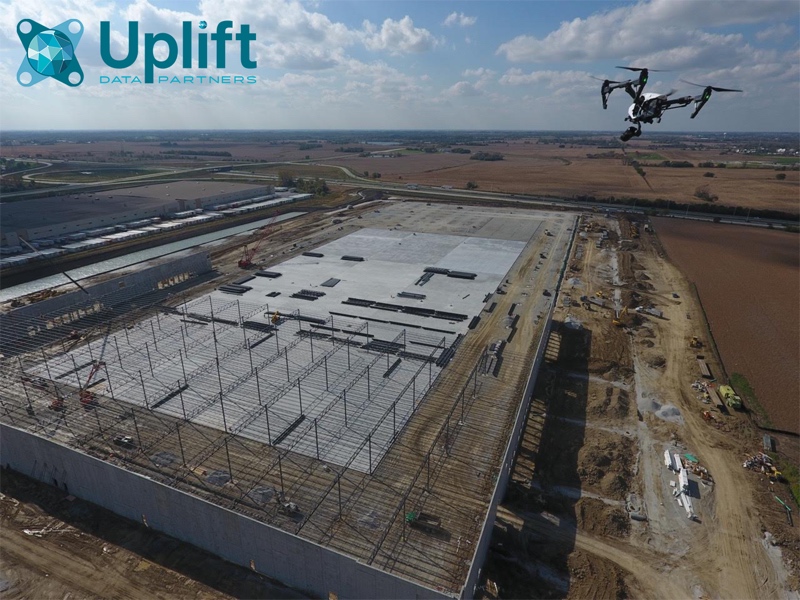It seems inevitable that every industry will eventually start automating. In construction this moment has already arrived, partially due to the release of unmanned aerial systems, many of which include software and payloads designed to help companies create 3D maps of their worksites without any human intervention.
The problem, according to Uplift Data Partners president Suzanne El-Moursi, is that these automated 3D mapping solutions promise more than they can deliver.
Automation Isn’t Good Enough Yet
Before we get into it, here’s a little background on Uplift Data Partners. Uplift is a drone service provider for the AEC industry that calls itself a “turnkey company” because it performs the whole workflow for its customers, from flying and analyzing all the way through data delivery. As El-Moursi says, “We solve the problem that commercialized drone operations are tedious, or outside the core competency of the business.”
El-Moursi clearly understands why a construction firm would want to hand off its drone mapping work—but she believes it’s a task that can only be properly performed by a human pilot who is present onsite.
That’s because worksites still involve such a large number of trades and “so many moving parts that it’s difficult to orchestrate so that we can have that peak performance.” El-Moursi argues that this complexity can cause a lot of problems for those using autonomous drones, from difficulty updating mission parameters on short notice, potential collisions with moving machinery, poor coordination with other trades, and unexpected hazards. To respond to these situations—for now at least—she argues that you’ll need a human onsite who is actively engaged in the work.
Automation Might Never Be Good Enough
IWon’t we develop technologies to help autonomous drones overcome these limitations? Aren’t we already most of the way there? El-Moursi says that the technology itself isn’t the limiting factor: It’s humans.
To drive her argument home, she mentions the popular idea that we’ll soon be building structures using swarms of autonomous robots. “That assumes that all the robots are in some kind of orchestration throughout the day. Then, the question becomes, How do you orchestrate the humans? They’re not robots. We can’t just assume that there is a piece of technology that can do that.”
Furthermore, she says, even though an automated drone mapping system may develop more advanced 3D mapping and obstacle avoidance features, it will never be able to fully get out of the way on a worksite like a service provider can. Since an automated drone mapping system can’t attend the 8 am daily stand-up meeting where the final assignments and the needs of the day are discussed, it still needs to be updated by a live person. That makes it just another thing for a project engineer or superintendent to manage on a worksite that’s already complex and demanding enough.
“That’s the stuff that I’m speaking about,” she says. “You cannot tell me for every detail that there’s a feature in the autonomous platform that will deal with it.”
The Problem with the Way We Adopt New Tech
The root of the issue, El-Moursi argues, is that we often get so excited about new technology fail to fully consider human element.
“I believe we need to widen the definition of adoption,” she says, “and expand our understanding of what is required for adoption to include that it’s part human and part technology. Until you do that, you’re being very microscopic. I haven’t seen at all that the human can be excluded right now—not for this industry at least.”






